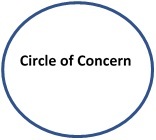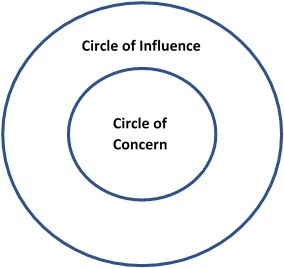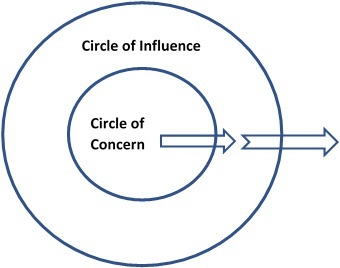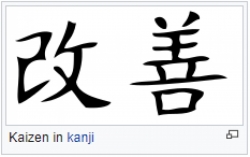This article is based on the first habit from the book "The Seven Habits of Highly Effective People".
Ron works in a senior position at a major company and was in charge of arranging a very important tour with the Minister of Commerce at one of the projects managed by the company.
The visit was important to the company, but to Ron it was even more significant. He viewed the success of the visit as a personal test and an opportunity to position himself better in the eyes of the company CEO.
The weather forecast for the day before the visit mentioned the possibility of stormy weather, and Ron was so worried he couldn't sleep a wink that night. He was afraid the visit would fail because of the weather.
In the end, when the tour reached its first stop, It did rain heavily, but Ron was lucky to find a large awning under which the entire group could shelter and listen to explanations. By the time the tour continued on, the rain had stopped. The tour was very successful and Ron breathed a sigh of relief. He decided he had been lucky.
Luck did, indeed, play a part for Ron, but he could have prevented the reliance on the weather and actually not get into a situation of concern and anxiety.
Ron couldn't change the weather or the date of the visit set by the Minister of Commerce, but he could have acted in other ways. For example, he could have checked to see if there was available cover should it start raining, or change the route of the tour and begin somewhere that did have cover, or bring in a company that constructs large tents and build cover.
The Circle of Concern and the Circle of Influence
In his book, The Seven Habits of Highly Effective People, Stephen R. Covey presents the principle of proactivity (the first habit).
The Circle of Concern includes subjects related to health, family, work, the weather and more.

Some of the concerns we cannot change, but we can do something about the others. This second part is found in our Circle of Influence.
Covey defines it like this: "We can discover the degree of our proactivity by determining which circle is the focus of most of our time and energy. Proactive people focus their efforts on the Circle of Influence (page 90).
"Proactivity means that as human beings, we are responsible for our own lives. Our behavior is a function of our decisions and not of our conditions. We have the ability to subordinate feelings to values. We have the initiative and the responsibility to make things happen." (page 77).

Direct Control, Indirect Control and Lack of control
Often concern develops into anxiety and anxiety paralyzes us. However, instead of enabling matters in the Circle of Concern to control us, we will examine what we can move to the Circle of Influence, thus enabling us to control the results.
For example, in the example above, Ron allows his concern to control him, but he had the means to choose a different path of action and to control the situation or results (I will present one option for moving matters from the Circle of Concern to the Circle of Influence in a moment).
Covey presents it like this: "The problems we face fall into one of the following three areas: direct control (problems involving our own behavior); indirect control (problems involving other people’s behavior); or no control (problems we can do nothing about, such as our past or situational realities).
The proactive approach puts the first step in the solution of all three kinds of problems within our present Circle of Influence (page 94).
How will we act?
Let's distinguish between two situations: a specific case like the weather that threatened to ruin Ron's organized tour, or a work interview and life itself.
In the first case, above, I would advise Ron to plan in advance and list all of the factors that might ruin the tour (for example, the weather, a breakdown in the minibus that transported the minister and his group, or Ron or his CEO's falling ill).
Let's assume he has not done this and the day before the tour, he discovers that stormy weather is in the forecast. In this case, rather than give in to his concerns, he should list all the situations that stormy weather might cause and provide a response to each possibility.
As, in this case, time is of the essence, Ron should gather a small team of people from among his colleagues and employees around him and think together, via brainstorming, on everything that might happen and how to overcome each potential obstacle.
Another example: a work interview. Einav is a very talented woman. When looking for employment, she experienced paralyzing anxiety that prevented her from functioning, and she was unable to get past the stage of the work interview. I suggested that we run a simulation of a work interview.
We set up a meeting, Einav arrived and we began the simulation. Although she knows me well, the formality with which I began the interview paralyzed her.
We stopped the exercise, and Einav explained that the situation paralyzes her and she forgets everything she wanted to say.
We agreed that she would make a list of her principal points with paragraph headings, and when she began an interview, she would explain that she was very nervous and so would refer to a list of subject headings. We then discussed the issue of salary.
Einav thought she would ask for a lower salary than her previous one, and I suggested that she ask for an even higher salary, one that would suit her talents and the position she was applying for.
Einav moved her search for employment from the Circle of Concern to the Circle of Influence and within a short time was accepted to a position she really wanted, with a high salary.
These two actual cases presented above illustrate how a move from real anxiety from the Circle of Concern, where we are controlled by reality, to the Circle of Influence, where we control reality – enables us to better manage our lives.
When we are trapped in the Circle of Concern, and especially when that concern develops into paralyzing anxiety, it isn't easy to take a step back and determine a plan for organized action to move the worrying matter from the Circle of Concern to the Circle of Influence and deal with it.
In this case, I recommend asking someone close to you to think together with you, or to involve your HR manager at work. In a moment, I will present an organized plan for action.
The second situation, a whole series of problems that concern us in life. In this second case, we are not facing a single problem but a whole group of different problems.
Plan for action
I recommend going step by step, as follows:
- Make a list of all the things that concern or worry you.
- In the inner circle, the Circle of Concern, list all the things that concern you that you cannot control, change or affect.
- In the outer circle, the Circle of Influence, list all the things you can control, change or affect.

- See if there are any things you can take out of the Circle of Concern and move to the Circle of Influence.
- List all the concerns located in the Circle of Influence in the table below, preferably according to priority.
- For each of the concerns you have listed, choose what is right for you at this stage to do: to act, not to act or to put on a waiting list.
- Choose one concern you have listed under the definition "for action" and determine a plan of action for how you will resolve the concern, and then remove it from the Circle of Influence.

Suggestion for Stephen Covey's Implementation
Choose a frustrating problem from your work or personal life. Define the problem in terms of direct control, indirect control and no control. Determine the first step you can take in your Circle of Influence for resolution of the problem and implementation of the solution.
Summary and Recommendations
In the above article, I have presented a way to cope with concerns that worry us – how to remove them from the Circle of Concern (where we are reactive) to the Circle of Influence (where we are proactive).
Afterwards, we can cope with the concerns in the Circle of Influence and in the next stage, move more concerns from the Circle of Concern to the Circle of Influence.
Remember that even if we can't change concerns we have no control over, like, for example, the weather, we can cope with their effects on us.
The difficulty begins when the concerns cause us tension or paralyzing anxiety that will not enable us to cope with them proactively.
When you feel yourselves in a situation of paralyzing anxiety, I recommend seeking help from friends or your HR manager at work.












 My First Book: Manage! Best Value Practices for Effective Management
My First Book: Manage! Best Value Practices for Effective Management